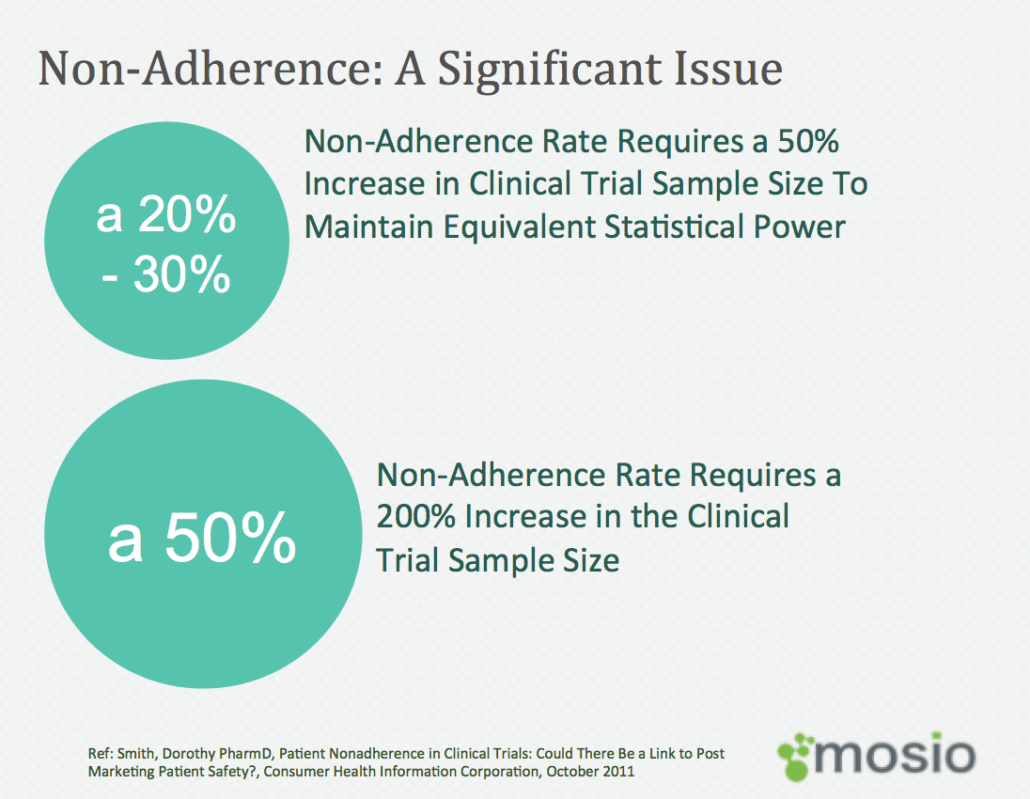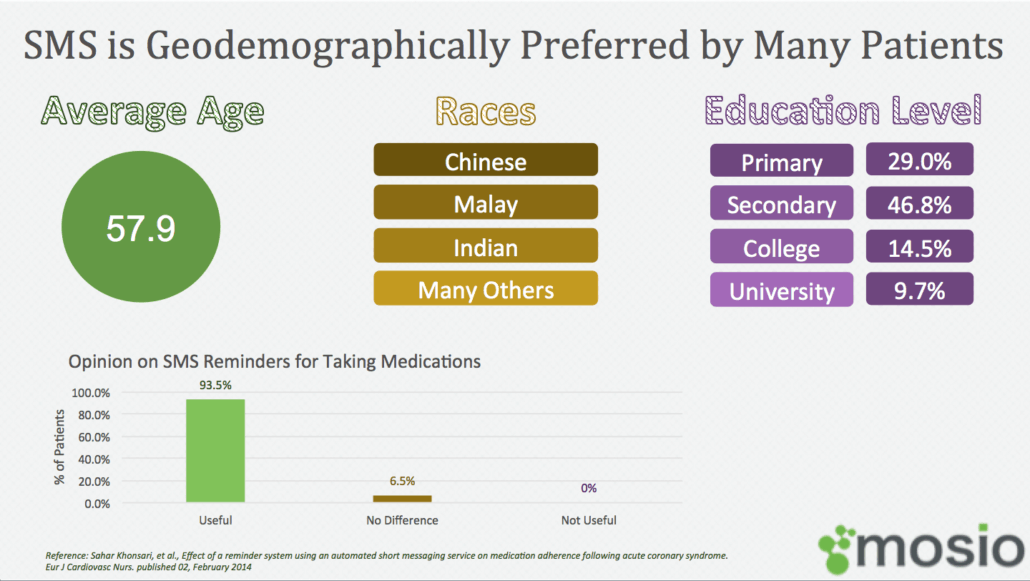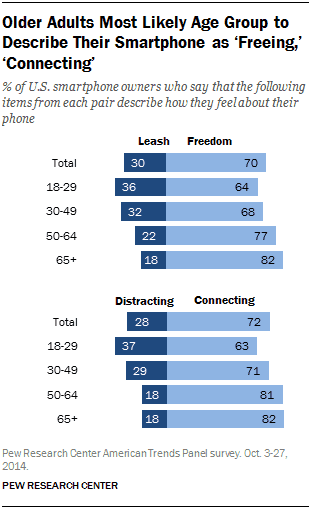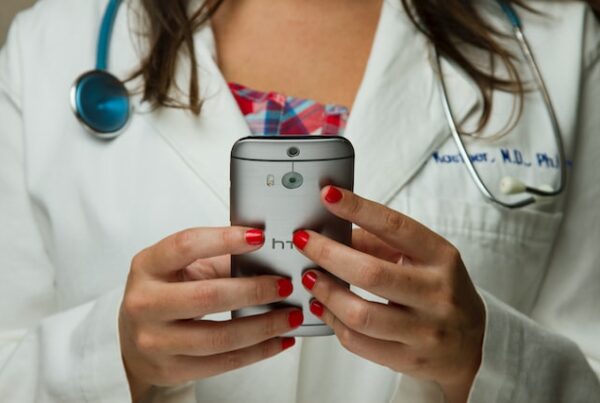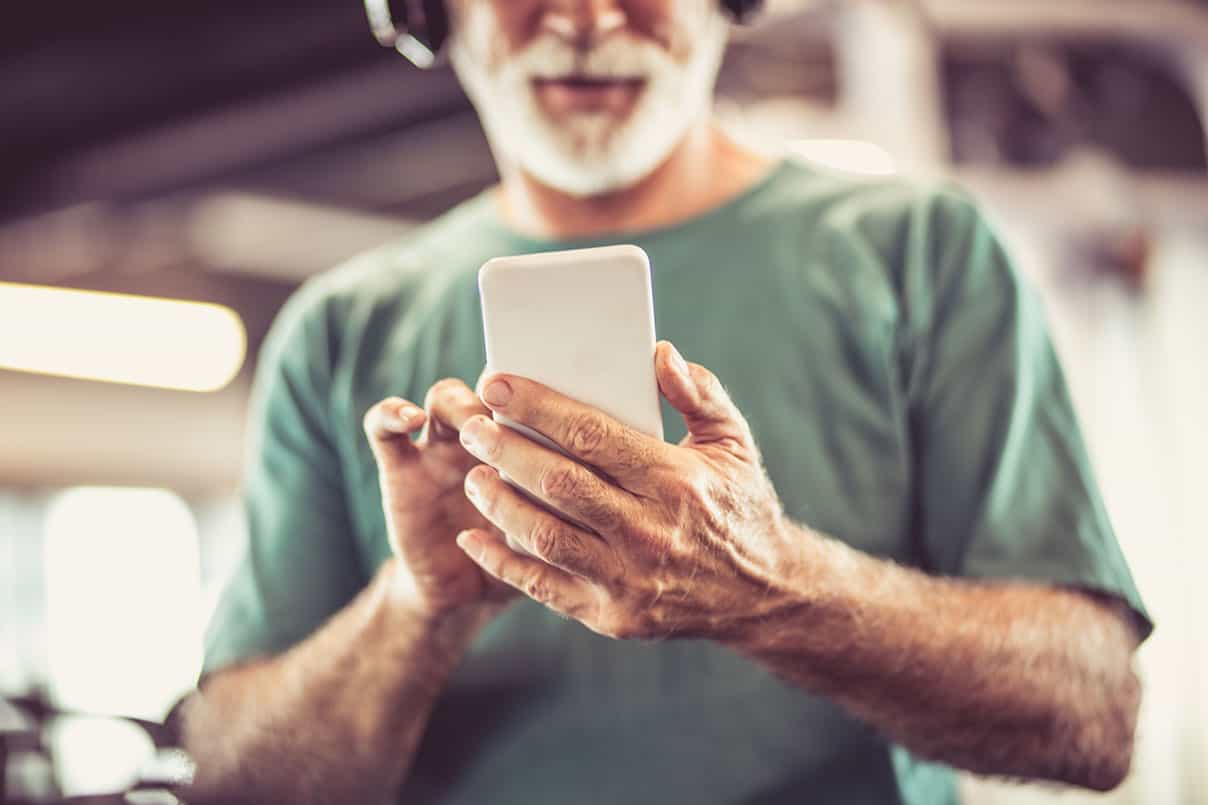Out in public, waiting for the bus, in line at cafes, etc, it’s clear that average adults use their mobile phones…a lot. We don’t need research and stats to tell what our eyes show us: everyone is messaging and communicating via their mobile devices. But what about older demographics of mobile users? 50 years? 60 years? 70?
Recruiting, retaining and collecting data from research participants is a big challenge in any age group, research teams are looking for every tool they can to achieve study goals. Can you improve your efforts communicating with study participants on their mobile phones? The short answer is “yes, you absolutely can,” but some people want more information.
We often get questions about text messaging usage in the 50+ years demographic. Some researchers want to know whether patients over fifty, especially the elderly population, use cell phones and text messaging at all. We’ve even heard “I text, but I’d love to see some statistics showing that others in this demographic are doing it as well.”
We’ve provided evidence of this information in the past, some of it you’ll see below. Here’s a more robust list of statistics and articles showing you that the over-fifty crowd does in fact use text messaging, with one stat showing the 45-65 age group is the fastest growing demographic of mobile phone users and texters. We’re not going to lie, there’s even a recent stat from Experian, below about 70 year old smart phone users and their texting habits that caught us by surprise. First we will introduce the goal of this post, which is to explain how text messaging in clinical trials can lead to greater adherence in all age demographics.
Clinical Trials Adherence
Study participants have other things going on in their lives. Even with the best of intentions, life happens. As a company, we are seeing an increase in the number of research teams that are looking to technology to recruit, retain and collect data from study participants. Generally what we hear is that research teams are realizing they need to make some changes. We had one client on a study funded by the Geneva Foundation, “I told my superiors that if we don’t use text messaging, this study won’t happen. Our email efforts to collect survey data were terrible.”
Here are a few stats about recruitment, retention and adherence.
- Twenty to thirty percent decrease in medication adherence may result in increasing the patient sample size by 50% in order to maintain sufficient statistical power. (Applied Clinical Trials, 2015)
- Inversely, 40% non-adherence requires a 200% increase in the sample size in order to maintain significant statistical power, resulting in increased clinical trial costs, and medical product approval delays. (D. Smith, PharmD, 2012)
- A study published in JAMA about lifestyle-focused text messaging on risk factor modification found “The majority reported the text messages to be useful (91%), easy to understand (97%), and appropriate in frequency (86%),” The mean age of this study was 58 years. (American Medical Association, 2015)
- At 32% of total costs, patient recruitment (and retention) is the largest cost of a clinical trial. (Cutting Edge Information, 2011)
Email, phone calls and voicemail
Before we show the research on older demographics, we want to share some statistics about emails and phone calls. Research shows that emails and voice calling may not be the best way to engage trial participants in any age demographic.
- Ninety to ninety-six percent of all emails received are spam. (Spamhaus, 2010)
- Only 33% still listen to voicemails from business contacts. (Forbes and Cisco VNI Update, 2013)
- Over 30% of voicemails linger unheard for 3 days or longer (NY Times, 2009)
- Only 18% of Americans will listen to a voicemail from an unknown number. (Forbes, 2013)
- On average, Americans exchange five as many texts as they do phone calls. (Informate, 2015)
Texting and mobile users over 50
Not only is the usefulness of voice calling and email decreasing across all age demographics as a form of effective communication, the use of text messaging in the Baby Boomer and seniors age groups have been increasing in recent years and continues to grow.
- People aged 45-64 are the fastest growing demographic on the mobile frontier. (Nielsen, 2014)
- Half of mobile phone users 55+ own a smartphone. (Nielsen, 2014)
-
This study from Michigan State showed that older adults were willing to enroll in text message intervention trials: “Recruitment and Enrollment of Older Adults Into Mobile Phone Text Message Clinical Trials.” The mean age of participants was 58. (Michigan State University, 2015)
- Ninety-four percent of smartphone users 70 and older are text messaging on a weekly basis. (Experian, 2015)
- In the 50-64 age range, 88% own a cell phone, and in the 65+ age range, 74% own a cell phone. Out of all cell phone users, 81% use their phone to text message. (Pew Internet, 2013)
- Eighty-two percent of smartphone owners over 65 would describe their device as “freeing” rather than “a leash,” and mostly use their device for texting, calling, and email. (Pew Research, 2015, see image below)
- In the 50-64 age range, 75% of mobile phone owners use their mobile phones to send and receive text messages. (Pew Internet, 2013)
- Sixty percent of over-45-year-olds say that they are just as likely to use texting as voice calling. (Mobile Marketer, 2010)
- Sixty-six percent of Baby Boomers send text messages. (Forbes, 2012)
- People aged 55-64 send and receive an average of 80 text messages per month, and senior citizens 65+ average 32 text messages per month. (Baby Boomers, 2015)
- “Study Reveals Texts Messages Engage, Activate Medicaid Members” (HIT Consultant, 2016)
- Of Baby Boomers who use text messaging, 57% would have a positive view of a company that offers texting, and 42% agree that it would be convenient for any company to use texting for customer service. (Harris Interactive, 2014)
A word about research and statistics dates
With many statistics and research findings, the more recent the findings, the better. When it comes to mobile and text messaging use growing, older findings aren’t necessarily worse, why? Because as time has gone on, everyone has gotten older, the world has become even more mobile, more people own smartphones and the natural assumption here is that we’re sending more mobile messages, not less. In fact, Americans are now sending and receiving 5 times as many texts as phone calls per day (Informate, 2015). Five years ago, it was only twice as many text messages as phone calls (Nielsen, 2010). That said, where newer statistics could be found, we have updated them.
Conclusion
Text messaging is a phenomenon that may have started among the teen and twenty-something crowd, but it has grown to include all ages, including Baby Boomers and seniors. Those over fifty are today’s grandparents, and the easiest ways to connect with their grandkids are FaceTime, Skype and text messaging. In today’s working world, this demographic must also use cell phones for work, especially when traveling.
Lastly, many people are getting rid of landlines in lieu of cell phones (41% of American households only have cell phones) because cell phones are more convenient and have multiple functions. The over-fifty population is no stranger to mobile phones or text messaging. If you’re looking for ways to engage, retain and collect data from study participants, technology makes it increasingly more affordable to do so. If you’re looking for relevant technology where usage by study participants increases with each month, there is valid and proven evidence stating that text messaging is ready, waiting and evolving in its usefulness in the clinical research setting.
Interested in using text messaging in your next study? GET PRICING




